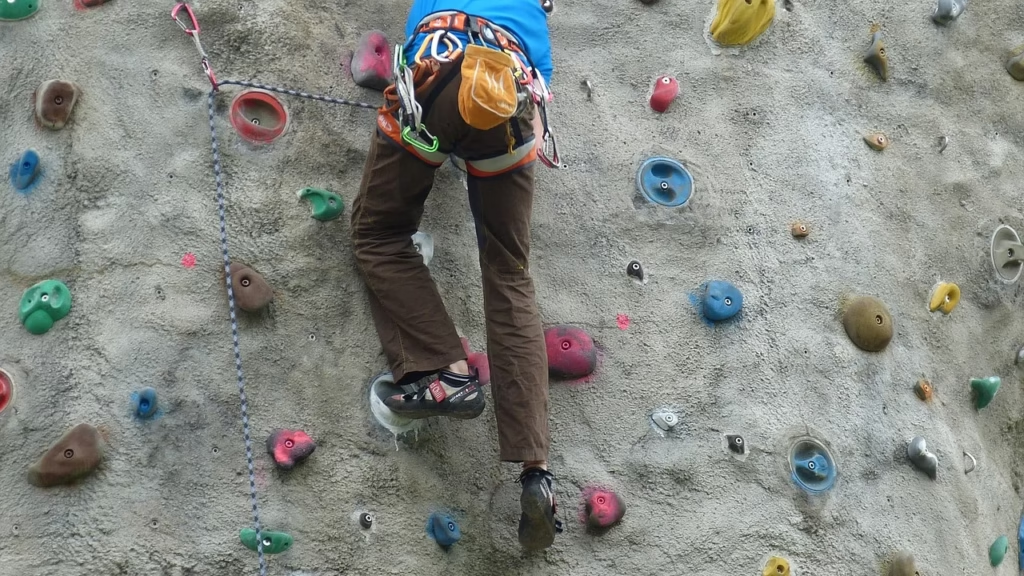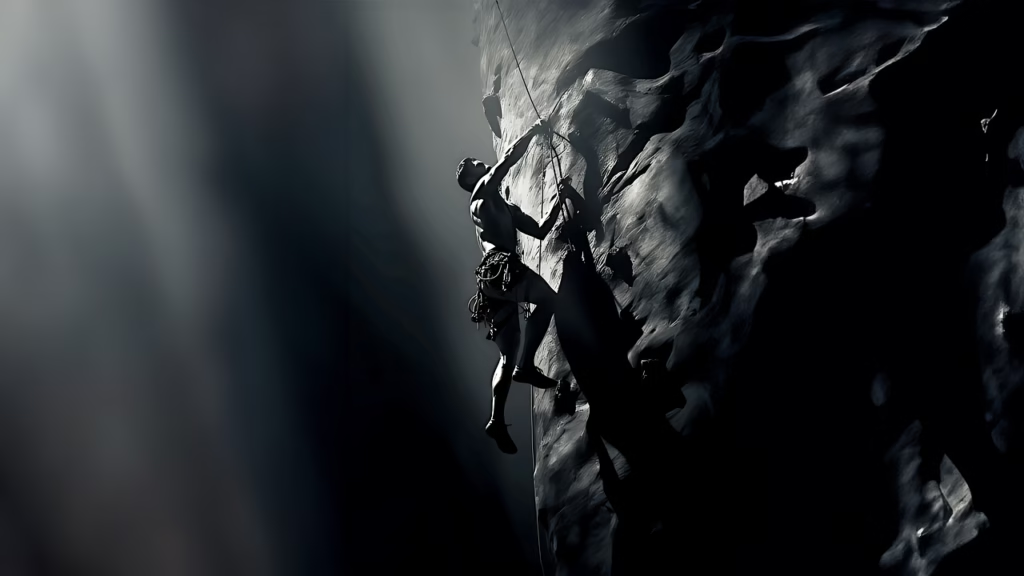Transitioning from indoor climbing to the great outdoors is a major milestone for any climber. The excitement of applying your skills on real rock, tackling natural routes, and taking in the stunning scenery makes outdoor climbing an unforgettable experience. But outdoor climbing comes with unique challenges and risks that indoor climbers need to prepare for. Here, we cover six essential considerations to help you navigate this transition safely and successfully.

Understand the Key Differences Between Gym and Outdoor Climbing
Recognizing the fundamental differences between indoor and outdoor climbing is crucial for your preparation:
- Rock Type and Texture: Unlike the consistent, artificial holds in gyms, outdoor rock varies greatly. It may be smooth, sharp, brittle, or slippery, requiring different techniques and a more adaptable approach.
- Route Finding: Outdoor routes don’t come with colored holds or chalk marks, so learning to read natural rock features is essential.
- Protection: Outdoor climbing often requires placing your own protection and building anchors, which demands specialized skills and knowledge.
- Environmental Factors: Weather changes, wildlife, and natural hazards all come into play outdoors and can impact your climbing day.
- Commitment: Outdoor routes often involve longer approaches, more time on the rock, and increased mental fortitude compared to gym climbing.
Tip: Practice reading climbing route maps and topos to get accustomed to visualizing outdoor routes before heading out.
Seek Mentorship and Guidance
One of the best ways to ease your transition is to learn from experienced outdoor climbers:
- Find a Mentor: Partner with a seasoned outdoor climber, guide, or instructor who can offer firsthand knowledge and tips.
- Join Climbing Communities: Connect with local climbing clubs or organizations that often host trips and clinics.
- Take a Class: Participate in outdoor climbing workshops to gain instruction from qualified professionals.
- Stay Curious: Ask questions, observe experienced climbers, and be receptive to feedback and advice.
- Adopt Best Practices: Learn about safety, etiquette, and environmental stewardship from those with more experience.
Remember: A good mentor can provide insights not only into climbing techniques but also into the unspoken rules of outdoor climbing, such as respecting other climbers and following local customs.

Start with Top-Roping
Top-roping is one of the safest ways to start climbing outdoors:
- Pick Easy Routes: Choose climbs that are well below your gym grade to focus on building confidence and adapting to the feel of outdoor rock.
- Practice Rope Management: Learn essential outdoor belay techniques and communication commands.
- Work on Anchor Skills: Practice setting up and assessing anchors under supervision.
- Route Reading: Develop your ability to identify holds and adapt your climbing style to real rock.
- Step Up Gradually: Once you’re comfortable, progress to more difficult top-rope routes.
Safety Tip: Practice flashing (completing a boulder problem or route on the first attempt). In outdoor settings, falls can be more consequential, so adopting a mindset of minimizing falls and taking each attempt seriously is important.
Progress Slowly to Lead Climbing
When you’re ready to lead climb outdoors, take it step by step:
- Start with Sport Climbing: Choose bolted sport routes with fixed anchors to familiarize yourself with outdoor lead techniques.
- Practice Clipping: Work on efficient and safe clipping methods while managing rope drag.
- Learn to Fall Safely: Practice controlled falls on easier routes to understand the dynamics of outdoor falls.
- Plan Rests: Find strategic points on the route to rest and conserve energy.
- Move Up Gradually: Only progress to harder routes as your experience and comfort with leading grow.
Important: Assess fall zones carefully. Outdoor falls can have more variable outcomes compared to those in a gym, where mats or padded floors minimize risk.
Invest in Quality Gear
The right gear can make all the difference in your safety and enjoyment:
- Basic Essentials: Ensure you have a reliable harness, helmet, climbing shoes, and belay device.
- Protection Equipment: Acquire quickdraws, cams, nuts, slings, and other necessary protection based on your climbing style.
- Safety Knowledge: Learn to inspect and maintain your gear regularly.
- Emergency Preparedness: Carry a compact first-aid kit and be familiar with basic emergency procedures.
- Guidebook and Weather Tools: A climbing-specific guidebook and a dependable weather app can help plan your climbs and stay informed of changing conditions.
Gear Tip: A helmet is non-negotiable for outdoor climbing. Falling rocks or unexpected impacts are far more common outside than in a controlled gym environment.

Respect the Environment and Local Ethics
Outdoor climbing comes with a responsibility to respect nature and local communities:
- Leave No Trace: Always pack out your trash, minimize environmental impact, and follow Leave No Trace principles.
- Preserve Wildlife: Be mindful of local wildlife and avoid disturbing habitats.
- Follow Regulations: Abide by access agreements, seasonal closures, and any specific regulations at your climbing destination.
- Use Established Trails: Stick to marked paths to avoid creating new routes that can damage vegetation and lead to erosion.
- Respect Other Climbers: Practice good crag etiquette, such as waiting your turn and keeping noise levels down.
Reminder: Outdoor climbing areas are shared resources. Your actions contribute to maintaining access and preserving these spaces for future climbers.
Embrace the Journey
Transitioning from gym to outdoor climbs is a thrilling journey that demands patience, learning, and respect for the environment. Start by understanding the differences, seek guidance, take it slow with top-roping, gradually move into leading, invest in the right gear, and practice good stewardship. Outdoor climbing is not only about physical strength but also mental preparation, adaptability, and embracing challenges.
Pro Tip: Treat each attempt on real rock as though it’s crucial – practicing a no-fall mindset helps cultivate focus and can minimize risk during outdoor climbs.
As you progress, remember that each climb, successful or not, contributes to your growth as a climber. Stay humble, be safe, and savor the adventure.
Happy climbing!
FAQs
- What is the biggest challenge when transitioning from gym to outdoor climbing? The biggest challenge is adapting to the natural variability of outdoor rock, which includes different textures, holds, and environmental factors.
- Why is practicing flashing important for outdoor climbs? Flashing encourages a cautious approach, minimizing falls that could be more dangerous outdoors compared to the controlled environment of a gym.
- What gear do I need for my first outdoor climb? Basic gear includes a harness, helmet, climbing shoes, belay device, quickdraws, cams, nuts, and slings, along with a guidebook and first-aid kit.
- Is lead climbing outdoors more difficult than in the gym? Yes, outdoor lead climbing often presents greater challenges due to factors like gear placement, route-finding, and less predictable fall zones.
- How can I find an experienced mentor for outdoor climbing? Join local climbing clubs, take outdoor clinics, or seek out guide services that pair climbers with experienced instructors.

